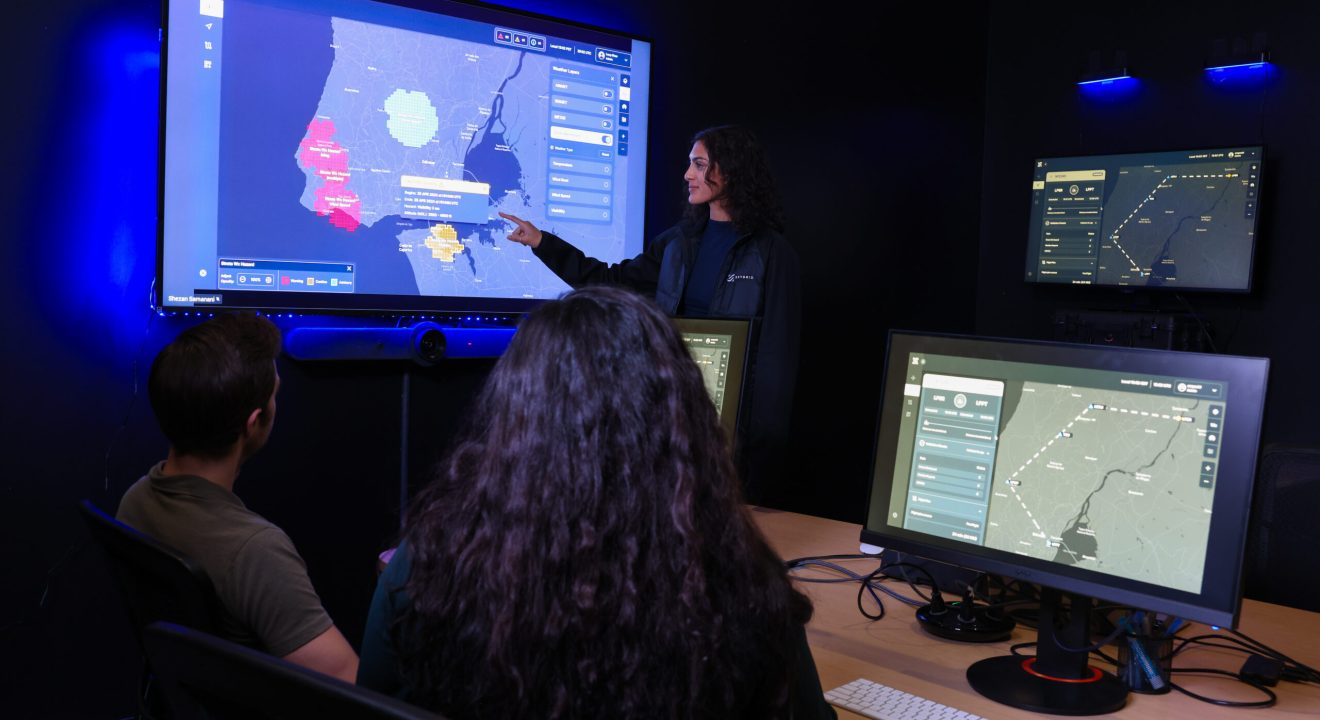Picture this: you want to travel from the airport to downtown, and you can choose between sitting in traffic for an hour or taking an Advanced Air Mobility (AAM) aircraft that gets you there in 15 minutes. For AAM to succeed, it must consistently deliver on this promise—faster, more efficient transportation that changes how people move through cities.
This vision represents a fundamental shift in aviation, moving beyond traditional runway-to-runway operations to a dynamic, three-dimensional transportation network that serves communities directly. But meeting these use cases and fulfilling consumer expectations depends on something less visible but equally important: strong digital infrastructure that enables high-assurance data flow and system interoperability across all phases of flight.
Unlike traditional aviation, which relies heavily on physical infrastructure like control towers and ground-based radar, AAM requires distributed, software-driven systems that can expand globally in response to operational demand. At its core, digital infrastructure includes the essential systems and services supporting AAM operations—from flight planning and surveillance to communication, coordination, and conflict resolution. Ground-based Third-Party Service Providers (TSPs), cloud networks, APIs, and data are the foundation for scaling these operations efficiently.
The Evolution from Manual to Digital Operations
Today’s aviation system relies heavily on voice communications between air traffic controllers and pilots. As we progress toward higher-density AAM operations, this manual approach must evolve into automated, system-to-system messaging that occurs seamlessly over cloud-based platforms.
This digital shift becomes even more important when removing pilots from cockpits and shifting their roles to remote pilots. In traditional aircraft, pilots can look outside to assess weather, terrain, and obstacles. However, ground-based operations depend entirely on digital data streams, making the assurance, latency, and update speed of that information crucial to safety.
The move to cloud-based systems introduces new cybersecurity challenges. These platforms must manage much more sensitive data while maintaining strong protection against spoofing and other threats. As operations become more automated, cybersecurity becomes more critical than ever.
Building the Digital Backbone
Key components of a robust digital infrastructure for AAM include: cybersecurity, low-latency, high update speeds, high data assurance, and interoperability. These elements work together to enable the predictive scheduling and real-time data collection capabilities necessary for higher-density operations.
As a TSP, SkyGrid is building the ground-based digital infrastructure required to coordinate autonomous aircraft, enable interoperability, and scale AAM operations safely. Our system optimizes information flow and ensures fast and secure data services. Collaborating with trusted, specialized partners will be crucial to building foundational digital infrastructure that is safe, scalable, and standards-aligned. Leveraging the specialized knowledge and resources provided by TSPs is the most effective solution to navigate these challenges.
Moving to digital systems doesn’t reduce safety requirements. Assurance levels in traditional aviation must be met or exceeded, with cybersecurity measures integrated from the outset rather than added as an afterthought.
Interoperability at the Center of AAM Success
Interoperability, the seamless exchange of information between different systems and stakeholders, should be central to developing digital infrastructure. AAM operators will need a shared operating picture and complete situational awareness, which cannot be achieved without interoperable systems sharing real-time airspace, traffic, and weather data.
The increased level of coordination required for higher-density operations calls for integrated solutions. This includes incorporating vertiports into the digital infrastructure, ensuring ground infrastructure can communicate effectively with TSPs, aircraft, flight operators, and Air Navigation Service Providers (ANSPs).
Without interoperability, even the most digital systems cannot address fundamental coordination challenges. The absence of seamless data exchange can cause safety risks, operational inefficiencies, and ripple effects throughout the airspace.
Investing in Digital-First Infrastructure Today
The industry must adopt a digital-first approach now that enables early discovery and resolution of unknowns during development. Starting with manual systems and trying to digitize later will leave the industry behind, missing out on early innovation and learning opportunities.
Implementation will be crucial for success. The industry must validate these digital systems through real-world testing to demonstrate their capabilities to regulators and stakeholders. This requires industry-wide agreement on standardization, ensuring that foundational systems work together while leaving room for innovation.
The digital-centered aviation ecosystem we need is a foundation that must be built now. By investing in robust digital infrastructure today, we can create a smarter, safer, and more sustainable airspace that benefits people and communities in the future.
